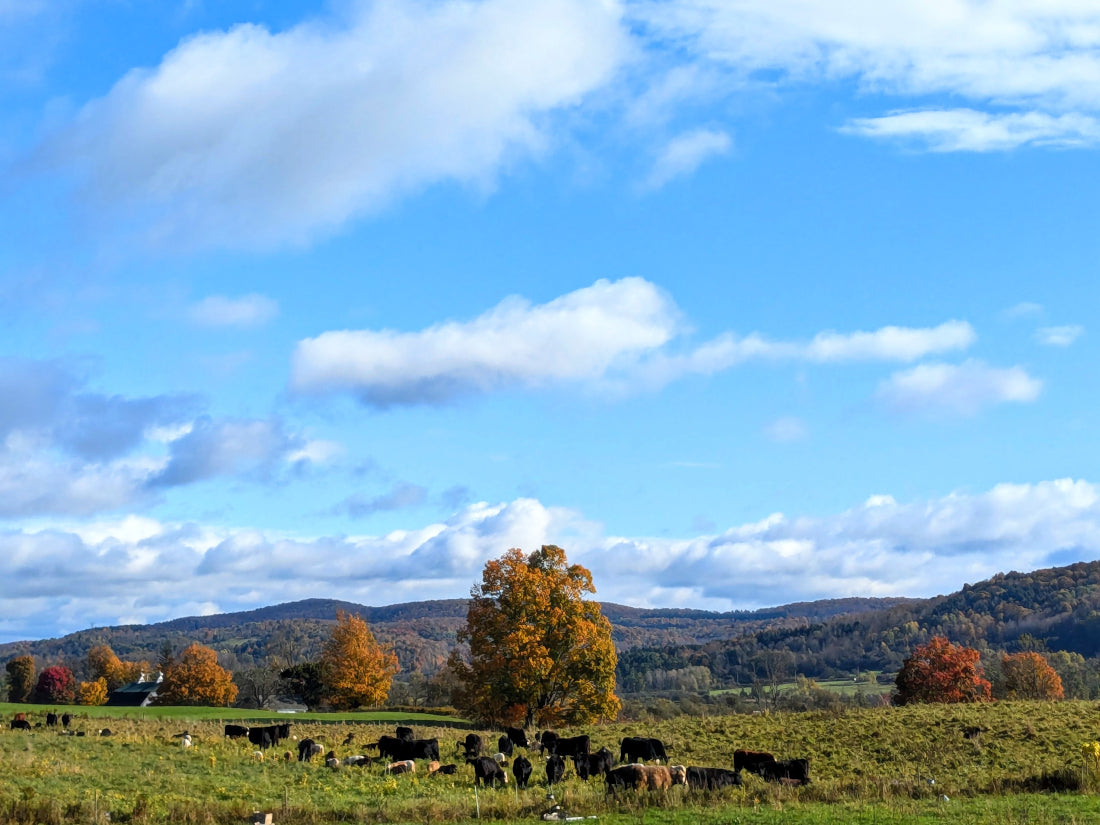With each passing year on the farm I grow less certain about how to fix the food system. I don’t mean this in the sense of what foods we should individually be eating; I am more convinced than ever that a diet of primarily whole foods is the best choice for almost all of us. I also still believe that there is a good, perhaps a fundamental good, in forming tangible connections between people and the places food comes from. What I’ve become far less sure of is how to make this a broader reality. How do we move from an agriculture based on corn and soy monocultures to a richer and more varied landscape designed to provide more people with real food?
This leaves me in a strange place. While I think it’s worthwhile to highlight problems with the food industry, like the health risks of Ultra-Processed Food (UPF) and the consolidation of the meat industry, I don’t think it’s enough. I would like to spend a bit more time exploring positive visions of the future and a bit less time bemoaning the negative parts of the present, but I don’t have total confidence in any plan to get rid of UPF or break up the big meat packers. But I’d like to find a middle ground between paralysis and delusional optimism. In other words, I’d like to look for ways things plausibly could get better, even if I’m not convinced they will.
I’m interested in doing this for two reasons. First, I think it’s a neglected part of the discussion of food and farming, which often tends towards extremes: lab-grown meat will save humanity or it will destroy it; the industrial food system is the only way to feed the global population or small-scale organic agriculture could easily meet our collective needs. Far less attention is paid to the incremental, practical steps that could steadily bring into being a future radically different from the status quo.
Second, I think it is a salutary habit of mind to spend at least some energy focusing on the possibility of concrete improvements rather than swinging between hope for utopia and fear of catastrophe. I personally want to look for ways things might get better and then to try to make those a reality, whether I’m thinking about food or anything else.
I’m still working out what this looks like in practice since, as I said, I don’t have a great deal of confidence in many particular solutions, but one example (hopefully the first of many I’ll write up in the coming months) has to do with Ultra-Processed Food. Though there’s endless arguing about exactly what constitutes UPF, in practice it’s pretty easy to identify. Most boxed or bagged products from a supermarket qualify. If you want a more detailed explanation, here’s a UPF identification guide.
For decades now the share of the human diet made of UPF has been steadily increasing. The trend is global, and it shows up in all but the very poorest countries. Given this prevalence, it’s easy to be fatalistic, to assume that eventually UPF will be all any of us eat. But I am heartened by the way criticism of UPF is slowly becoming mainstream. The current approach, of recommending people monitor and adjust food intake by reading labels, by avoiding this nutrient or prioritizing that nutrient, has failed. What I hope will replace it is a more general view that Ultra-Processed Food is unhealthy. It is possible that the collective view of UPF will come to resemble the collective view of smoking or alcohol.
For this to happen a couple things will need to occur. Both governmental and non-governmental medical bodies will have to trade muddy, complicated public health messaging for a straightforward campaign explaining that UPF in all its forms should be avoided. There will also need to be a trend towards preparing more meals at home since takeout food, as a rule, will always contain some amount of UPF.
I hesitate to mention it given the uncertainty, but I also think the advent of effective weight loss drugs, which make UPF less intoxicating, may have a role to play. Time will tell if they are a durable solution or if they have unforeseen side effects, but it’s possible they will help a great many people make better food choices.
What I like about this solution is that it relies not entirely on a seismic, systemic change, but on a combination of shifts in behavior and messaging. It’s something each of us can do for ourselves, but also something that has a clear collective and perhaps regulatory component. Changing the prevalence of UPF in the American diet will take generations, but it’s also something each of us can start doing for ourselves and our families today.
I’ll go a bit deeper than this in future discussion about how to improve food and farming, and I may even revisit Ultra-Processed Food in more detail. But I didn’t want to write an entirely abstract post about my search for concrete optimism.

